Qualification of an Ultrasonic Instrument for Real-Time Monitoring of Size and Concentration of Nanoparticles during Liquid Phase Bottom-Up Synthesis
Abstract
:Featured Application
Abstract
1. Introduction
Theory behind the Ultrasound Nanoparticle Sizer (UNPS) Method
- The UNPS should be able to accurately measure particle diameter.
- The UNPS should be able to accurately measure particle concentration.
- The UNPS should be fast enough to follow the reaction.
2. Materials and Methods
- The static measurements. These are measurements on samples of commercially obtained silica particles. The particle diameters are measured with the UNPS, and TEM. The particle concentration is measured by the UNPS and by measuring their mass after drying.
- The real-time monitoring experiment. During this experiment the UNPS real-time monitors the size and concentration of silica particles during a Stöber synthesis in a water–alcohol mixture, starting from the molecular precursor tetra ethyl orthosilicate.
2.1. The Static Measurements
Materials and Method
2.2. Real-Time Monitoring
2.2.1. Materials
2.2.2. Synthesis
2.3. The UNPS Instrument
Equipment and Method
2.4. Transmission Electron Microscopy (TEM)
2.5. Off-Line Dynamic Light Scattering (DLS)
3. Results
3.1. The Static Measurements Experiment
3.2. The Real-Time Monitoring Experiment
4. Conclusions
- -
- With static measurements we have verified the UNPS’ ability to measure particle size accurately enough by comparing the results of the UNPS and TEM. The UNPS and TEM measurements were mostly in the 3σ ranges.
- -
- With static measurements we have verified the UNPS’ ability to measure particle concentration accurately enough by comparing the UNPS results with the drying measurements. The mass concentration measurements showed good consistency between the undiluted, the half diluted samples, and the drying measurements. Concentrations below 2.5 w % were less consistent. However, most samples were within 14% of their expected value.
- -
- One UNPS measurement every minute was fast enough to follow a Stöber reaction for the synthesis of silica nanoparticles in real-time.
Author Contributions
Funding
Conflicts of Interest
References
- Buskens, P.; Burghoorn, M.; Mourad, M.; Vroon, Z. Antireflective coatings for glass and transparent polymers. Langmuir 2016, 32, 678. [Google Scholar] [CrossRef] [PubMed]
- Mann, D.; Chattopadhyay, S.; Pargen, S.; Verheijen, M.; Keul, H.; Buskens, P.; Möller, M. Glucose-functionalized polystyrene particles designed for selective deposition of silver on the surface. RSC Adv. 2014, 4, 62878–62881. [Google Scholar] [CrossRef] [Green Version]
- Segers, M.; Arfsten, N.; Buskens, P.; Möller, M. A facile route for the synthesis of sub-micron sized hollow and multiporous organosilica spheres. RSC Adv. 2014, 4, 20673–206676. [Google Scholar] [CrossRef]
- Mann, D.; Nascimento-Duplat, D.; Keul, H.; Möller, M.; Verheijen, M.; Xu, M.; Urbach, H.P.; Adam, A.J.L.; Buskens, P. The influence of particle size distribution and shell imperfections on the plasmon resonance of Au and Ag nanoshells. Plasmonics 2017, 12, 929–945. [Google Scholar] [CrossRef] [PubMed]
- Mann, D.; Voogt, S.; van Zandvoort, R.; Keul, H.; Möller, M.; Verheijen, M.; Nascimento-Duplat, D.; Xu, M.; Urbach, H.P.; Adam, A.J.L.; et al. Protecting patches in colloidal synthesis of Au semishells. Chem. Commun. 2017, 53, 3898–3901. [Google Scholar] [CrossRef] [PubMed]
- Buskens, P.; Mourad, M.; Meulendijks, N.; van Ee, R.; Burghoorn, M.; Verheijen, M.; van Veldhoven, E. Ultra-Low Refractive Index Coatings Produced through Random Packing of Silicated Cellulose Nanocrystals. Colloids Surf. A 2015, 487, 1–8. [Google Scholar] [CrossRef]
- Mann, D.; Voogt, S.; Keul, H.; Möller, M.; Verheijen, M.; Buskens, P. Synthesis of Polystyrene-Polyphenylsiloxane Janus Particles through Colloidal Assembly with Unexpected High Selectivity: Mechanistic Insights and Their Application in the Design of Polystyrene Particles with Multiple Polyphenylsiloxane Patches. Polymers 2017, 9, 475. [Google Scholar] [CrossRef]
- Segers, M.; Vermeer, I.; Möller, M.; Verheijen, M.; Buskens, P. Synthesis and Characterization of Hybrid Particles Obtained in a One-Pot Process through Simultaneous Sol-Gel Reaction of (3-Mercaptopropyl) trimethoxysilane and Emulsion Polymerization of Styrene. Colloids Interfaces 2018, 1, 7. [Google Scholar] [CrossRef]
- Epstein, P.S.; Carhart, R.R. The absorption of sound in suspensions and emulsions. I. Water fog in air. J. Acoust. Soc. Am. 1953, 25, 553–565. [Google Scholar] [CrossRef]
- Allegra, J.R.; Hawley, S.A. Attenuation of sound in suspensions and emulsions: Theory and experiments. J. Acoust. Soc. Am. 1972, 51, 1545–1564. [Google Scholar] [CrossRef]
- Geers, H.; Witt, W. Extinction for In-line Measurement of Particle Size and Concentration of Suspensions and Emulsions. In Particulate Systems Analysis; Harrogate, UK, 2003; Available online: https://archive.sympatec.com/docs/UltrasonicExtinction/publications/UE_2003_UltrasonicExtinction.pdf (accessed on 29 June 2018).
- Hartmann, U.; Behrens, C. Simultaneous on-line analysis of solid concentration and particle size distribution of Gypsum Slurries applying Ultrasonic Extinction. ZKG Int. 2006, 59, 17–21. [Google Scholar]
- Meli, F.; Klein, T.; Buhr, E.; Frase, C.G.; Gleber, G.; Krumrey, M.; Duta, A.; Duta, S.; Korpelainen, V.; Bellotti, R.; et al. Traceable size determination of nanoparticles, a comparison among European metrology institutes. Meas. Sci. Technol. 2012, 23, 125005. [Google Scholar] [CrossRef]
- Berne, B.J.; Pecora, R. Dynamic Light Scattering: With Applications to Chemistry, Biology, and Physics; Courier Corporation: Mineola, NY, USA, 2000. [Google Scholar]
- Brown, W. Dynamic Light Scattering: The Method and Some Applications; Clarendon Press: Oxford, NY, USA, 1993; ISBN 9780198539421. [Google Scholar]
- Dhont, J.; Dekruif, C.; Vrij, A. Light scattering in colloidal dispersions: Effects of multiple scattering. J. Colloid Interface Sci. 1985, 105, 539–551. [Google Scholar] [CrossRef] [Green Version]
- Meulendijks, N.; van Ee, R.; Stevens, R.; Mourad, M.; Verheijen, M.; Kambly, N.; Armenta, R.; Buskens, P. Flow cell coupled dynamic light scattering for real-time monitoring of nanoparticle size during liquid phase bottom-up synthesis. Appl. Sci. 2018, 8, 108. [Google Scholar] [CrossRef]
- Van Neer, P.L.M.J.; Volker, A.W.F.; Pierre, G.L.G.; Bouvet, F.L.D.M.; Crozat, S. Ultrasound transmission spectroscopy: In-line sizing of nanoparticles. In Proceedings of the IEEE International Ultrasonics Symposium, Chicago, IL, USA, 3–6 September 2014; pp. 2454–2457. [Google Scholar]
- Volker, A.W.F.; van Neer, P.L.M.J.; Pierre, G.L.G.; Bouvet, F.L.D.M.; Crozat, S. Method and Apparatus for Characterizing a Medium Using Ultrasound Measurements. US20170023532A1, 31 March 2014. [Google Scholar]
- Khan, M.F.; Dong, H.; Chen, Y.; Brook, M.A. Low Discrimination of Charged Silica Particles at T4 Phage Surfaces. Biosens. J. 2015, 4, 125. [Google Scholar] [CrossRef]
- Ibrahim, I.A.M.; Zikry, A.A.F.; Sharaf, M.A. Preparation of spherical silica nanoparticles: Stober silica. J. Am. Sci. 2010, 6, 985–989. [Google Scholar]
- Stöber, W.; Fink, A.; Bohn, E. Controlled Growth of Monodisperse Silica Spheres in the Micron Size Range. J. Colloid Interface Sci. 1968, 26, 62–69. [Google Scholar] [CrossRef]
- Giesche, H. Synthesis of Monodispersed Silica Powders; I. Particle Properties and kinetics. J. Eur. Ceram. Soc. 1994, 14, 189–204. [Google Scholar] [CrossRef]

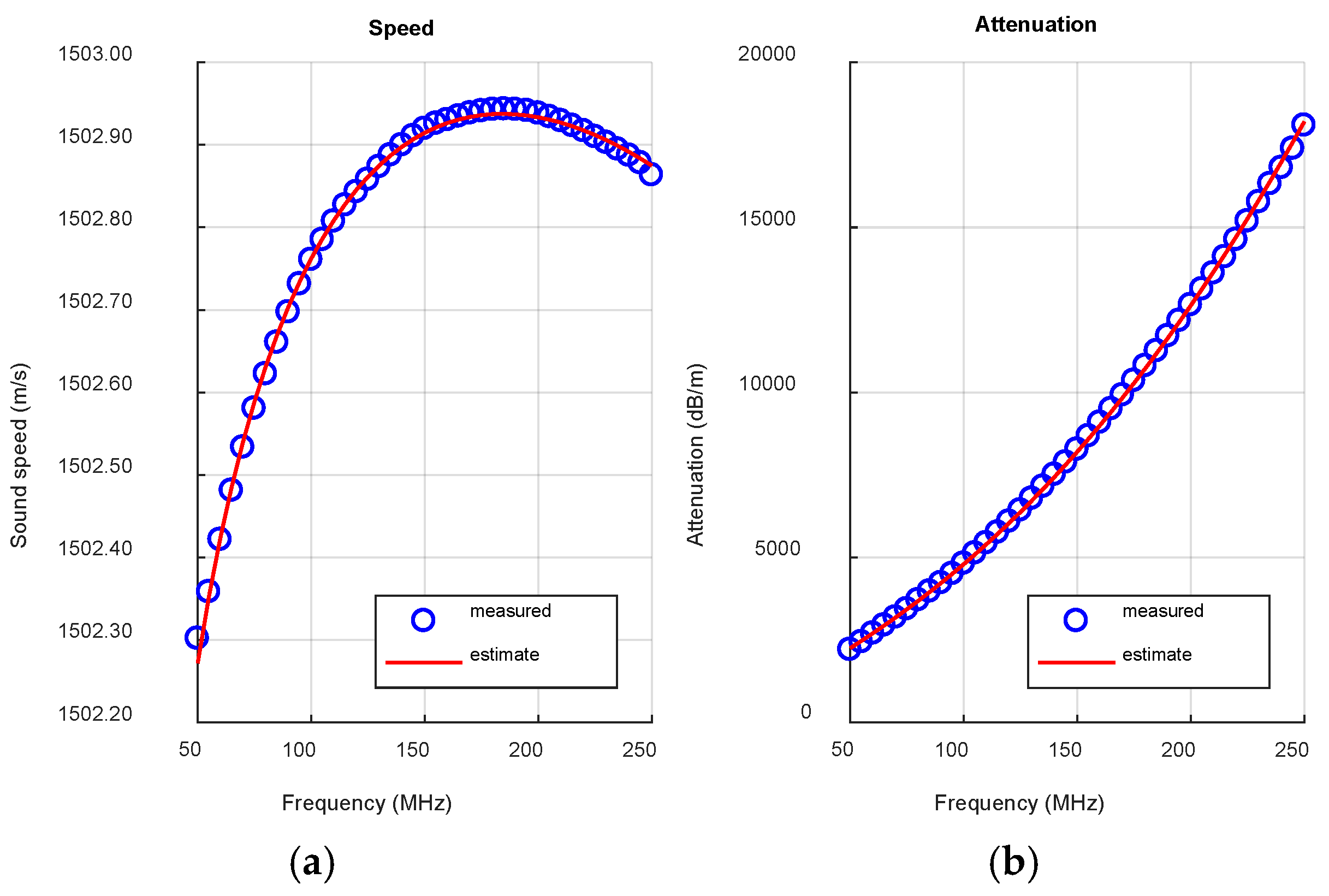
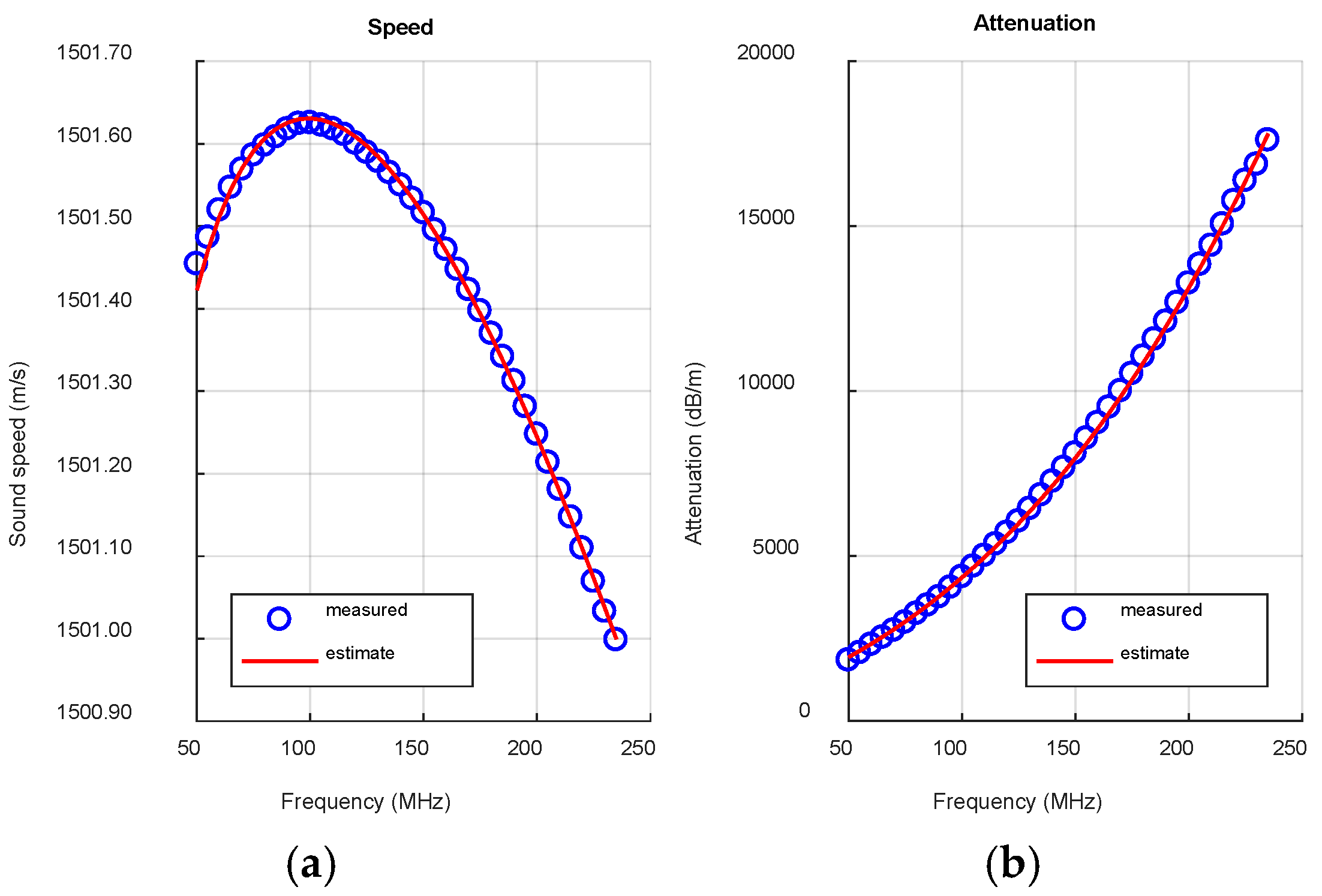
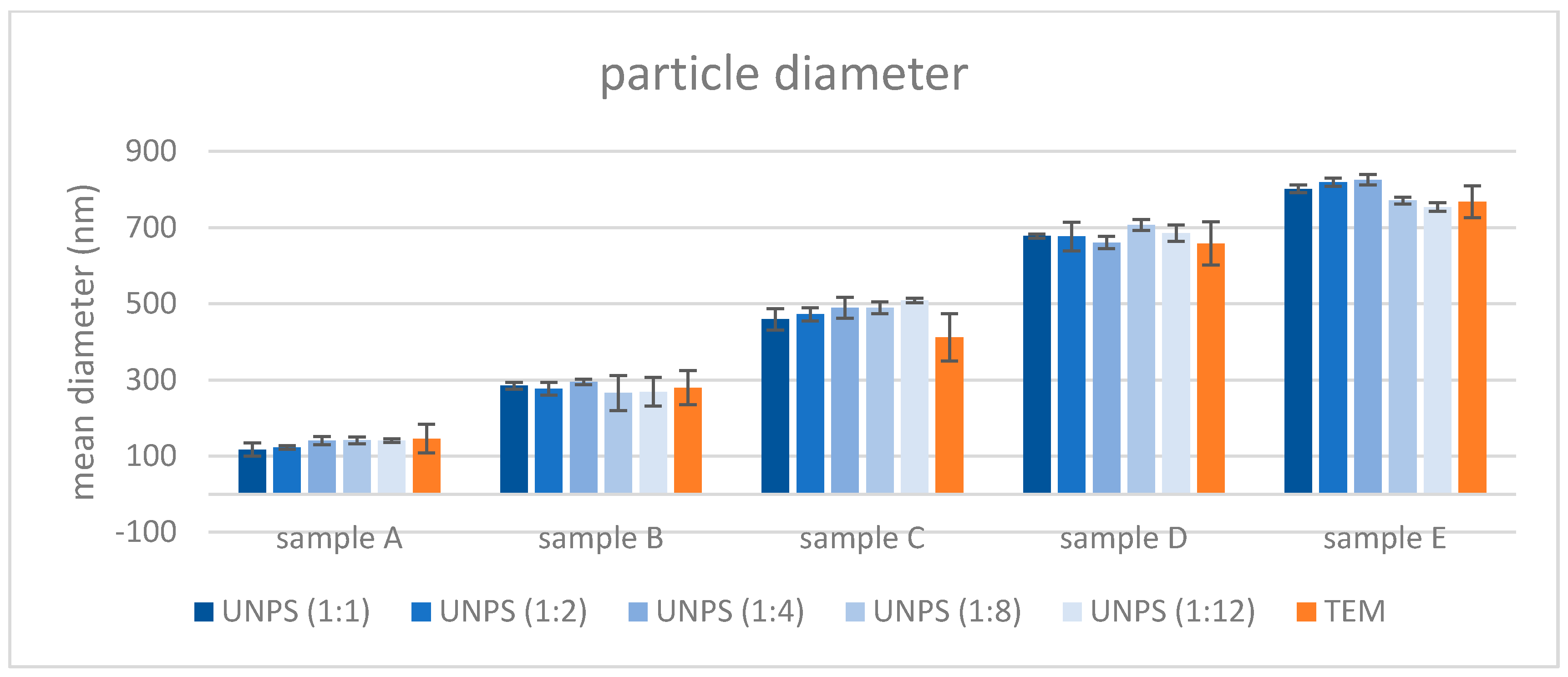
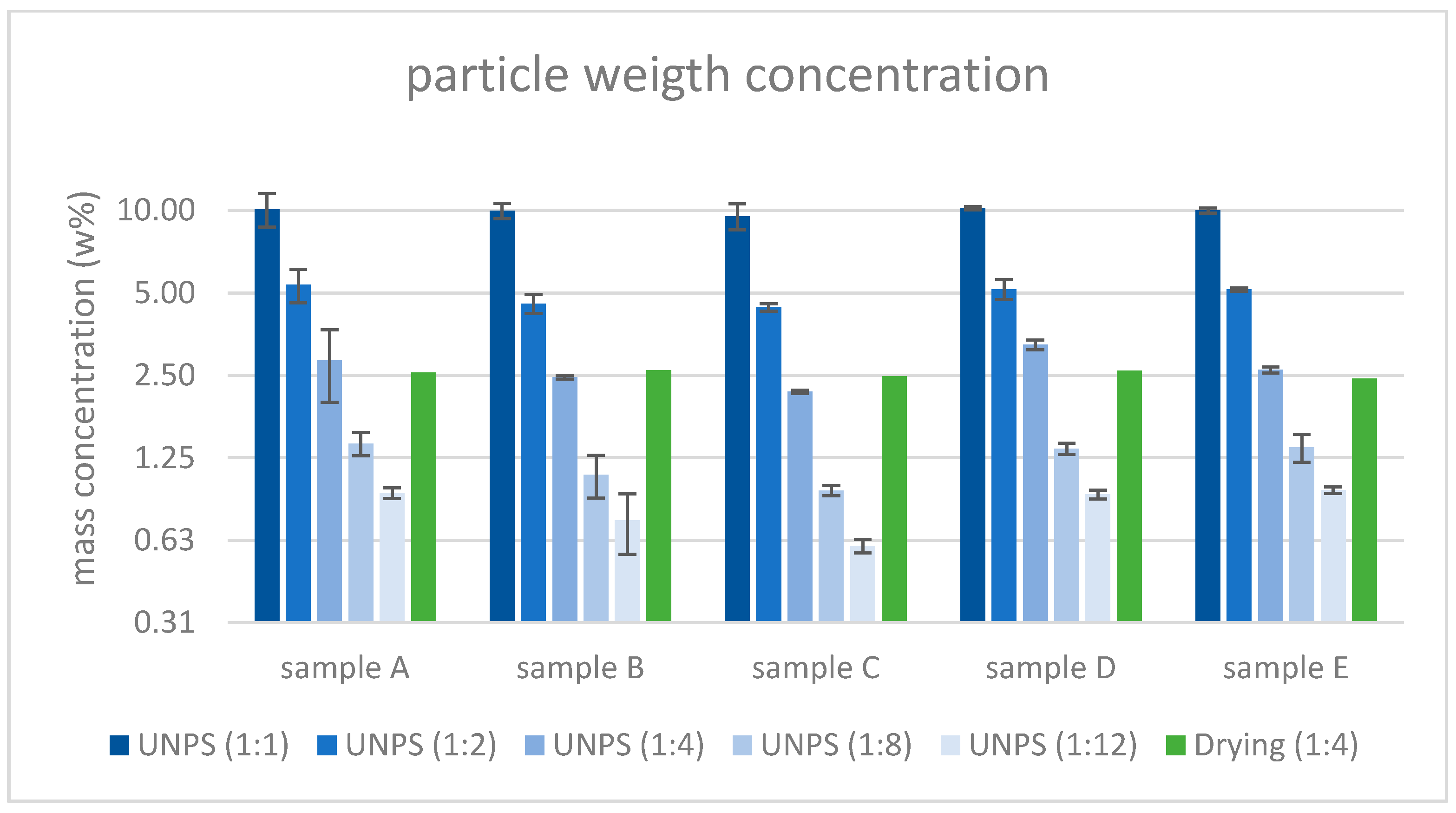
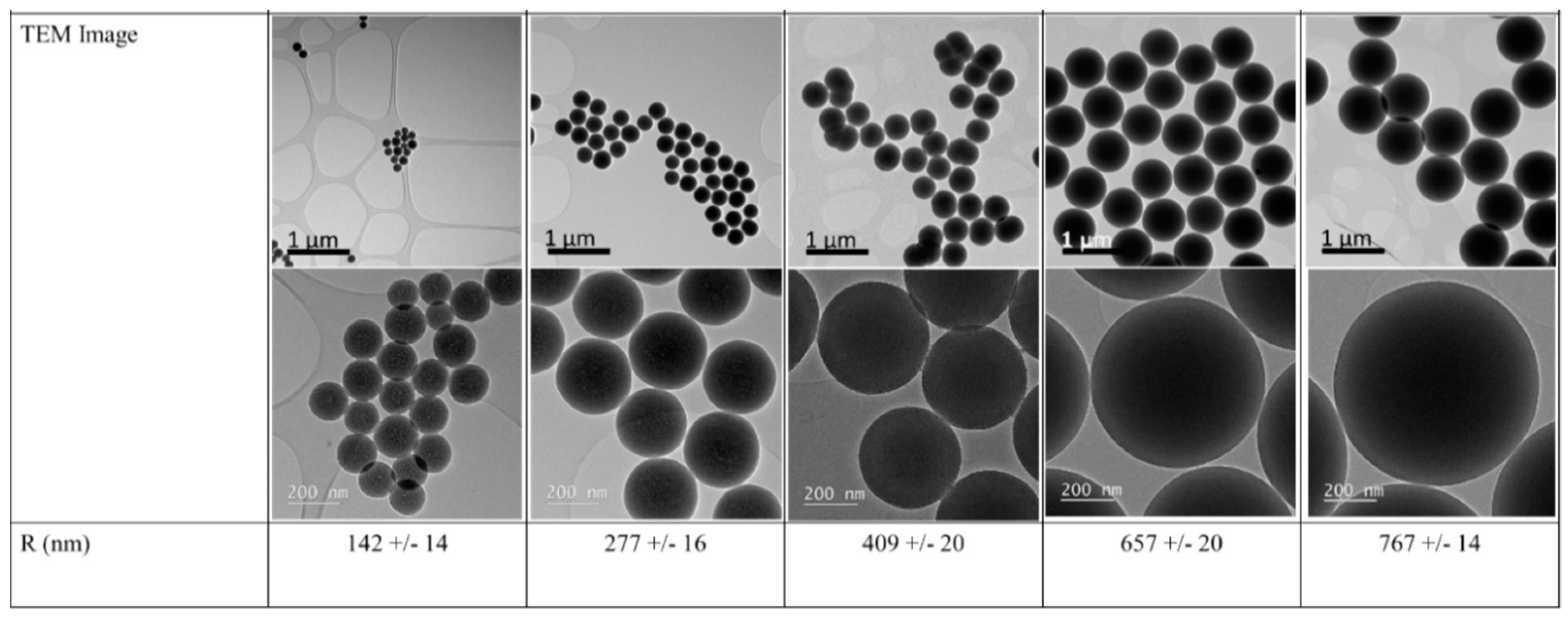
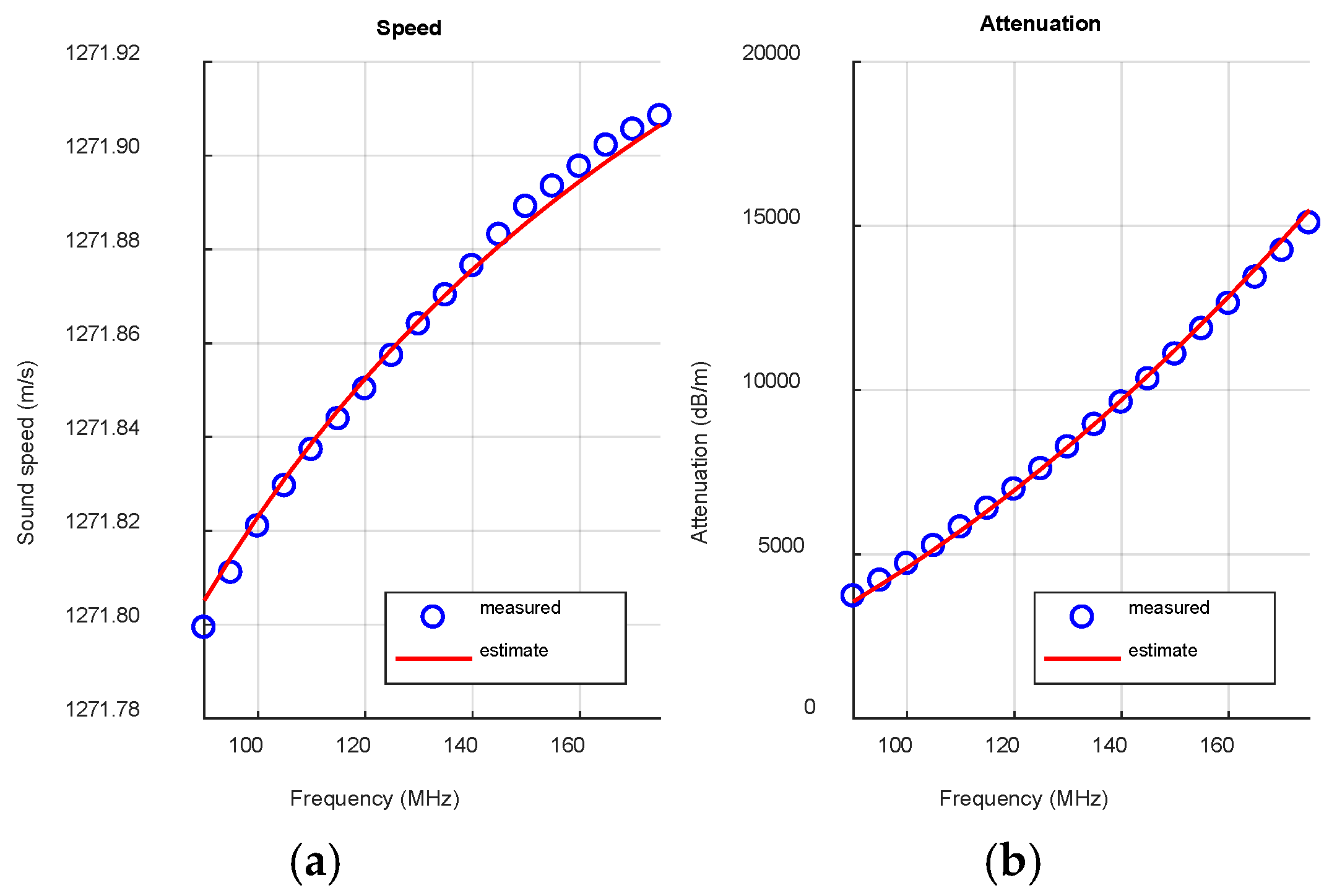
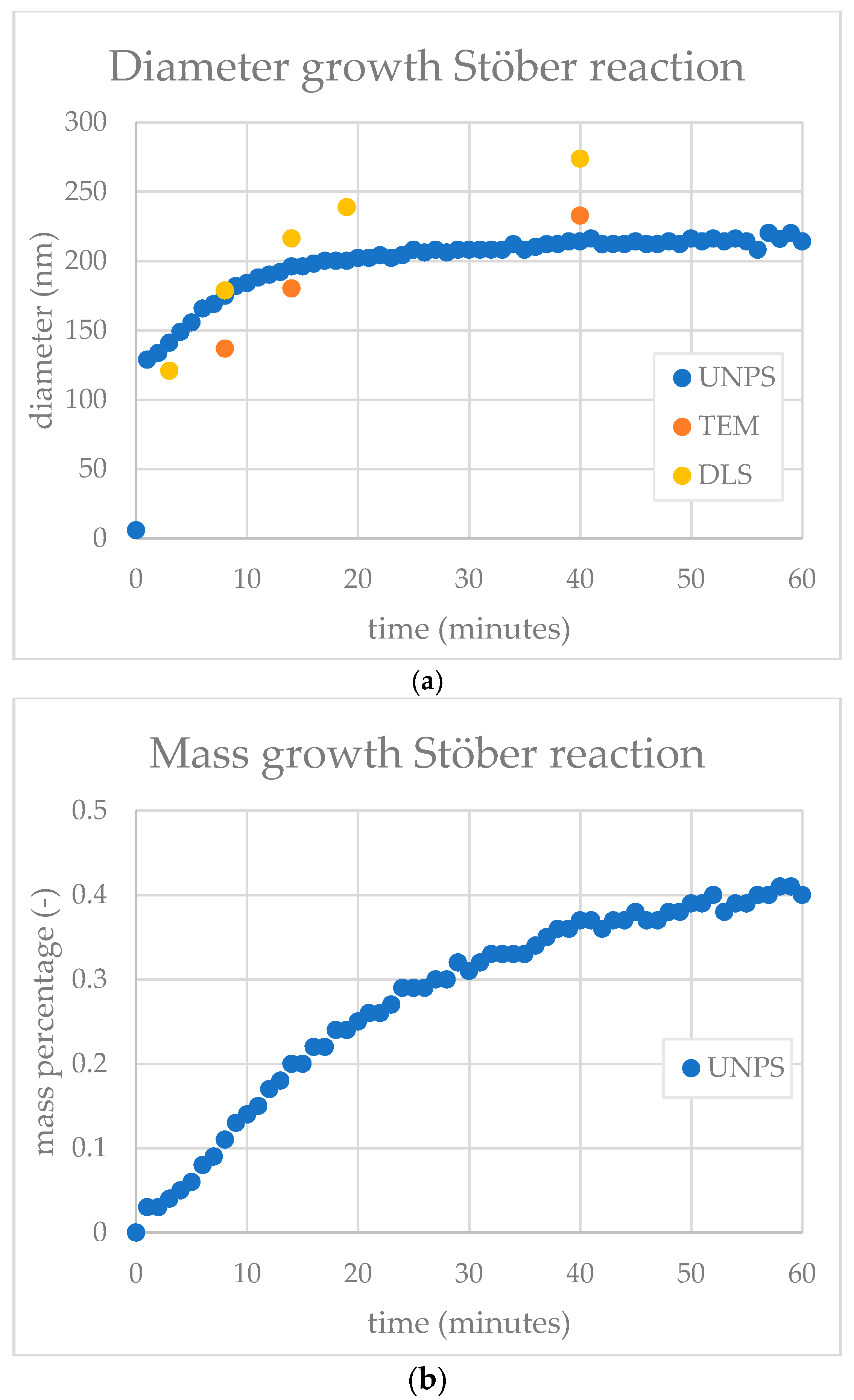
© 2018 by the authors. Licensee MDPI, Basel, Switzerland. This article is an open access article distributed under the terms and conditions of the Creative Commons Attribution (CC BY) license (http://creativecommons.org/licenses/by/4.0/).
Share and Cite
Van Groenestijn, G.J.; Meulendijks, N.; Van Ee, R.; Volker, A.; Van Neer, P.; Buskens, P.; Julien, C.; Verheijen, M. Qualification of an Ultrasonic Instrument for Real-Time Monitoring of Size and Concentration of Nanoparticles during Liquid Phase Bottom-Up Synthesis. Appl. Sci. 2018, 8, 1064. https://doi.org/10.3390/app8071064
Van Groenestijn GJ, Meulendijks N, Van Ee R, Volker A, Van Neer P, Buskens P, Julien C, Verheijen M. Qualification of an Ultrasonic Instrument for Real-Time Monitoring of Size and Concentration of Nanoparticles during Liquid Phase Bottom-Up Synthesis. Applied Sciences. 2018; 8(7):1064. https://doi.org/10.3390/app8071064
Chicago/Turabian StyleVan Groenestijn, Gert Jan, Nicole Meulendijks, Renz Van Ee, Arno Volker, Paul Van Neer, Pascal Buskens, Cédric Julien, and Marcel Verheijen. 2018. "Qualification of an Ultrasonic Instrument for Real-Time Monitoring of Size and Concentration of Nanoparticles during Liquid Phase Bottom-Up Synthesis" Applied Sciences 8, no. 7: 1064. https://doi.org/10.3390/app8071064
APA StyleVan Groenestijn, G. J., Meulendijks, N., Van Ee, R., Volker, A., Van Neer, P., Buskens, P., Julien, C., & Verheijen, M. (2018). Qualification of an Ultrasonic Instrument for Real-Time Monitoring of Size and Concentration of Nanoparticles during Liquid Phase Bottom-Up Synthesis. Applied Sciences, 8(7), 1064. https://doi.org/10.3390/app8071064




